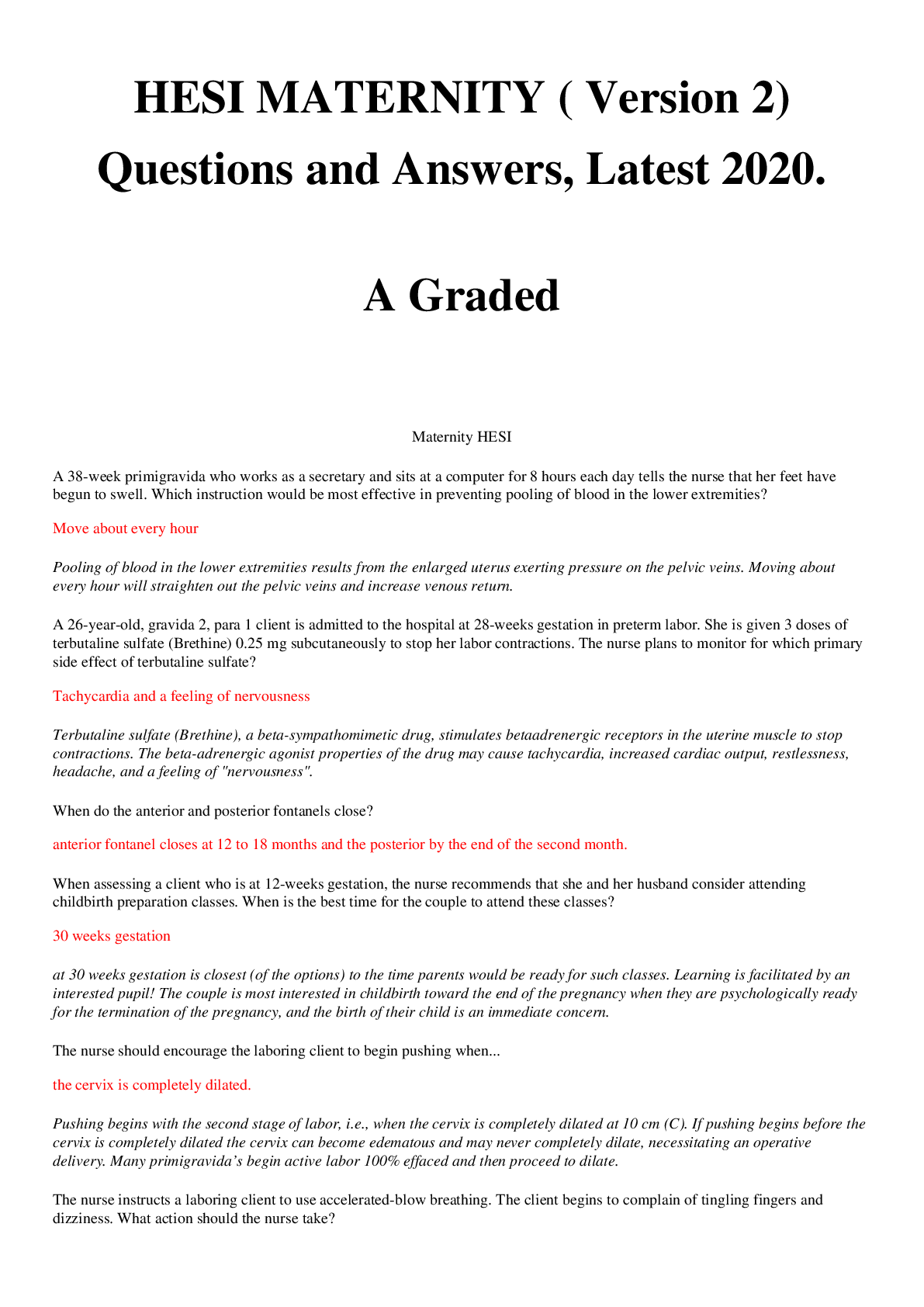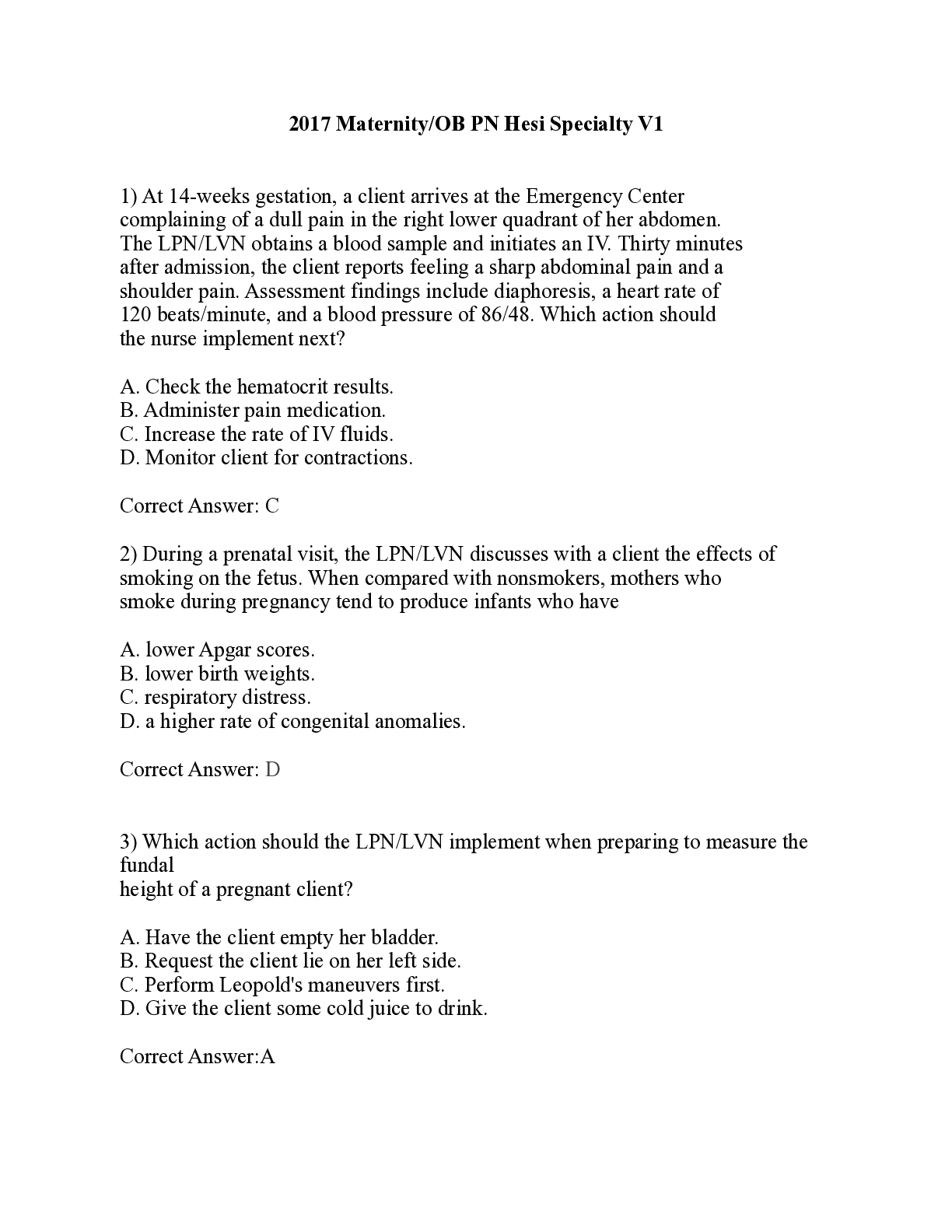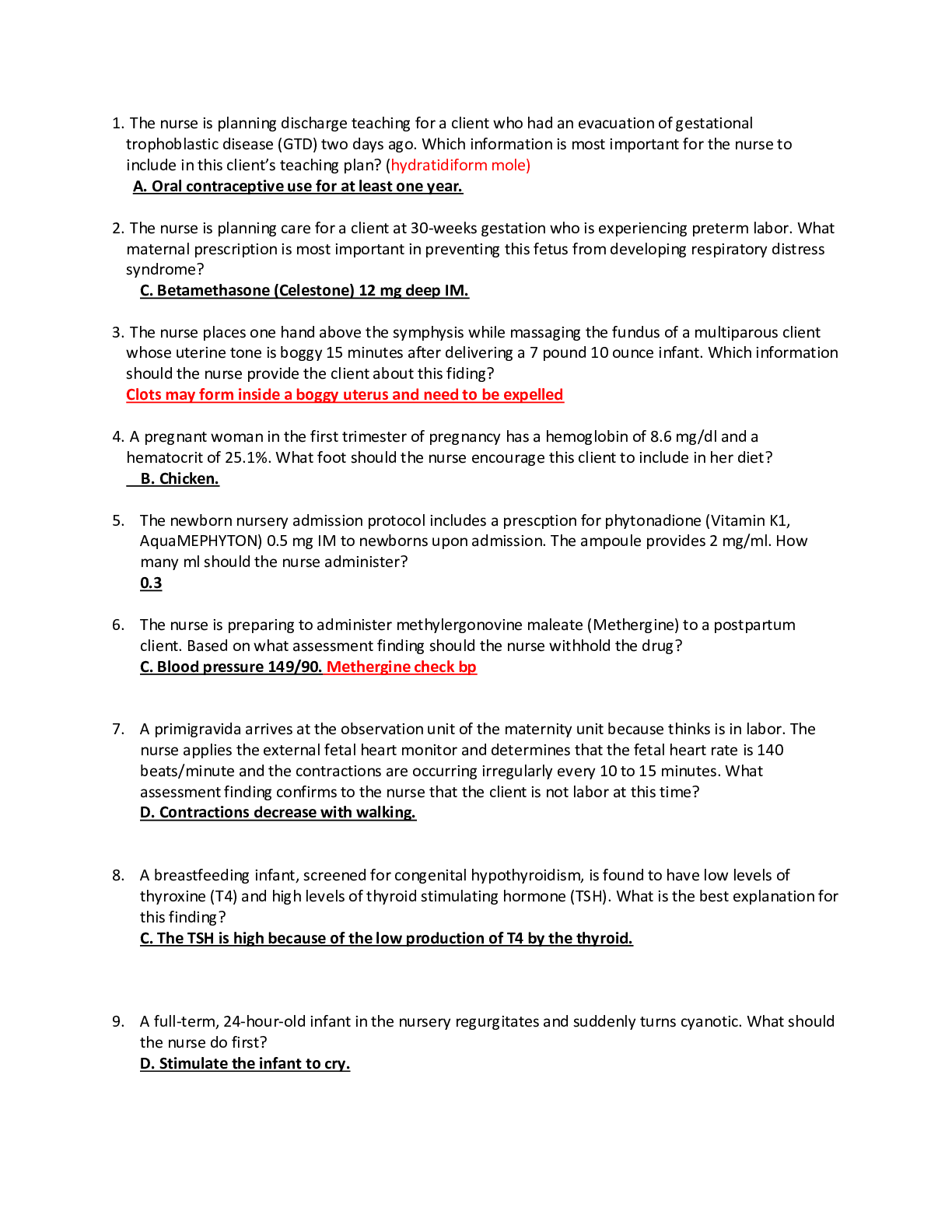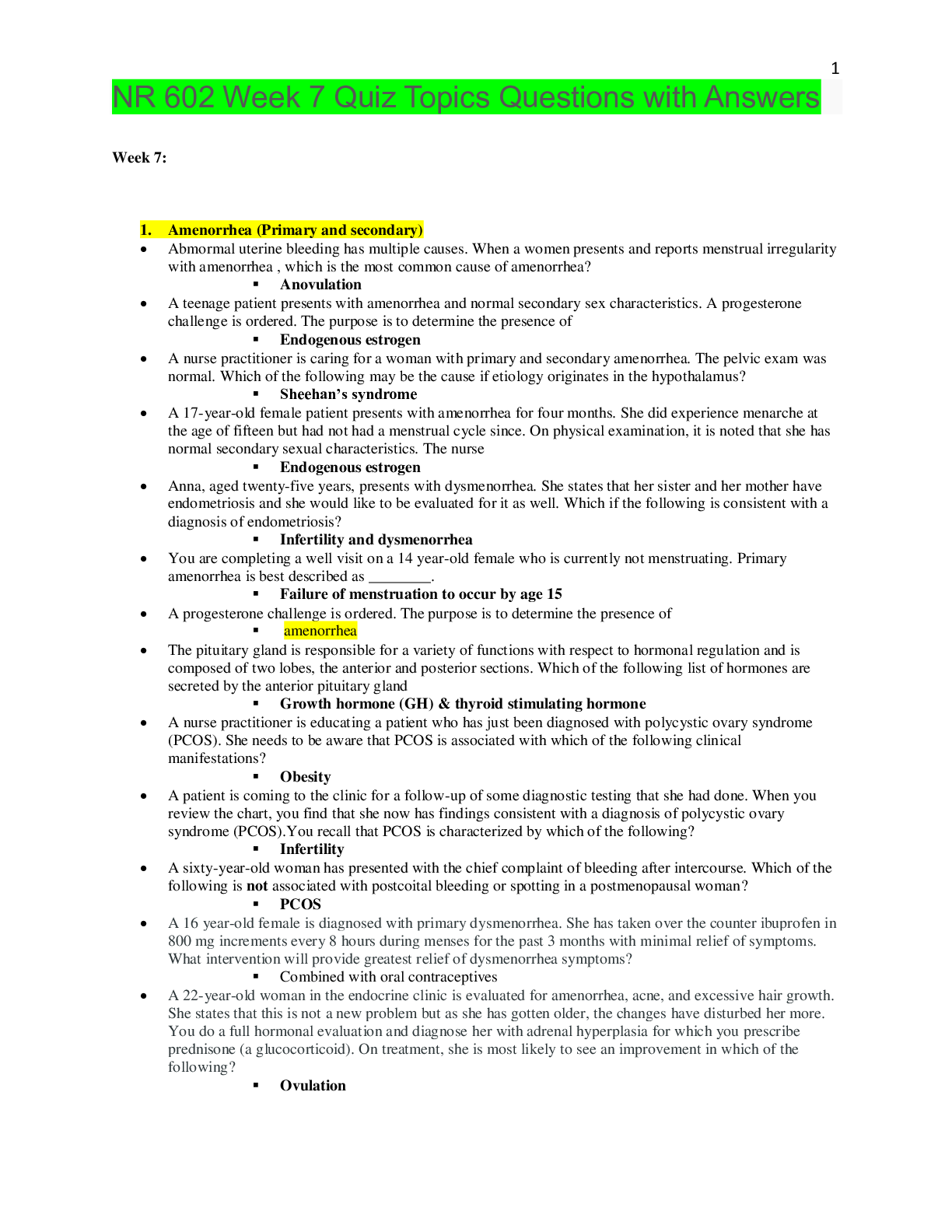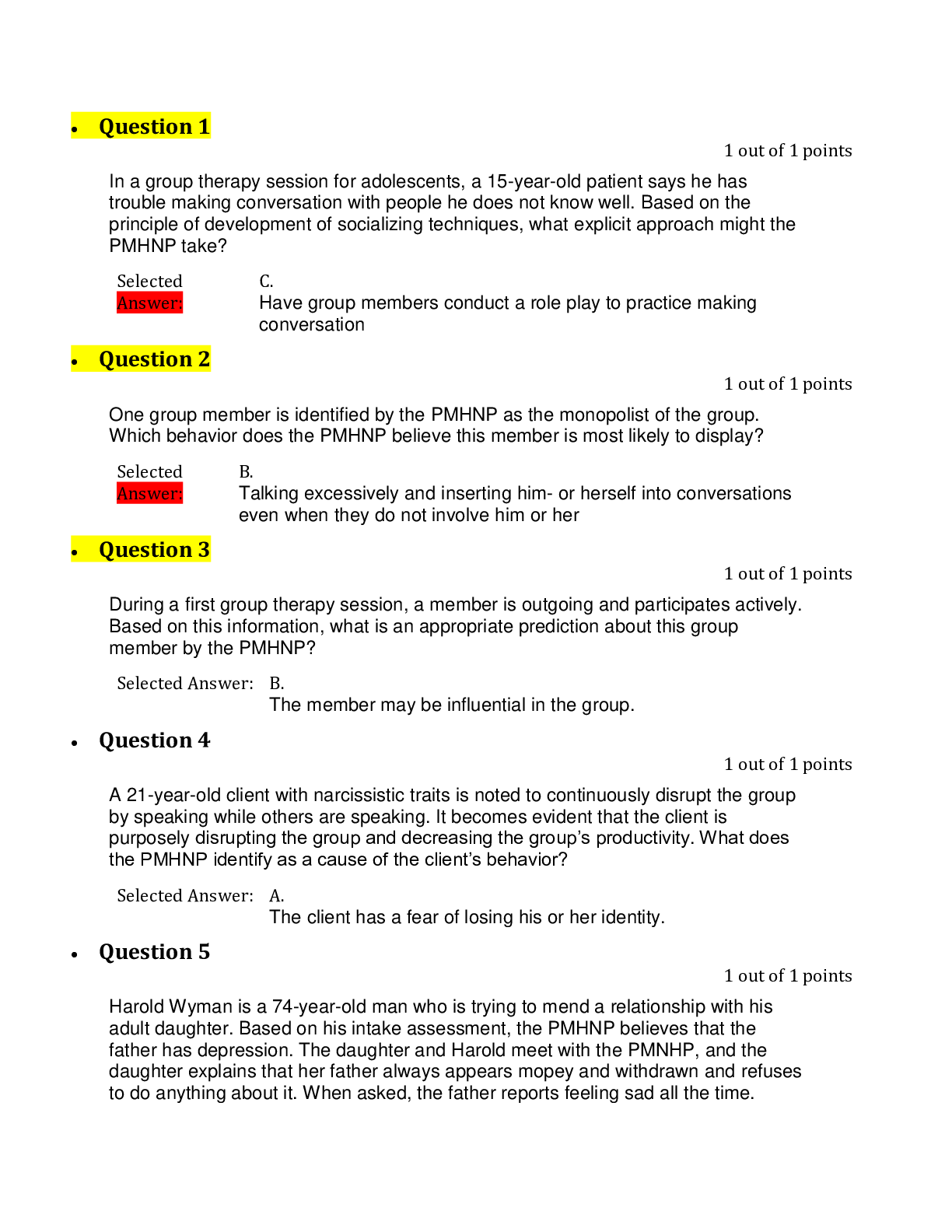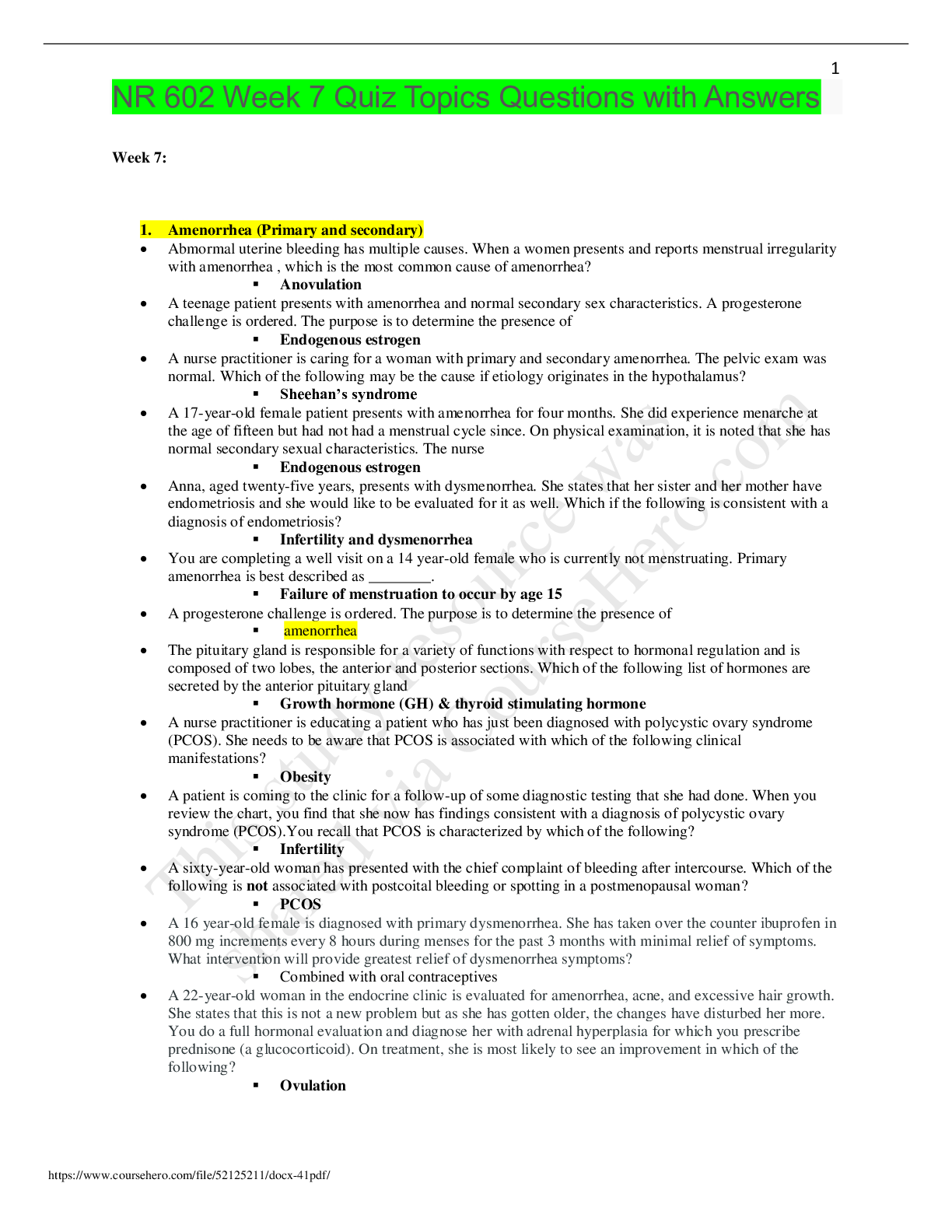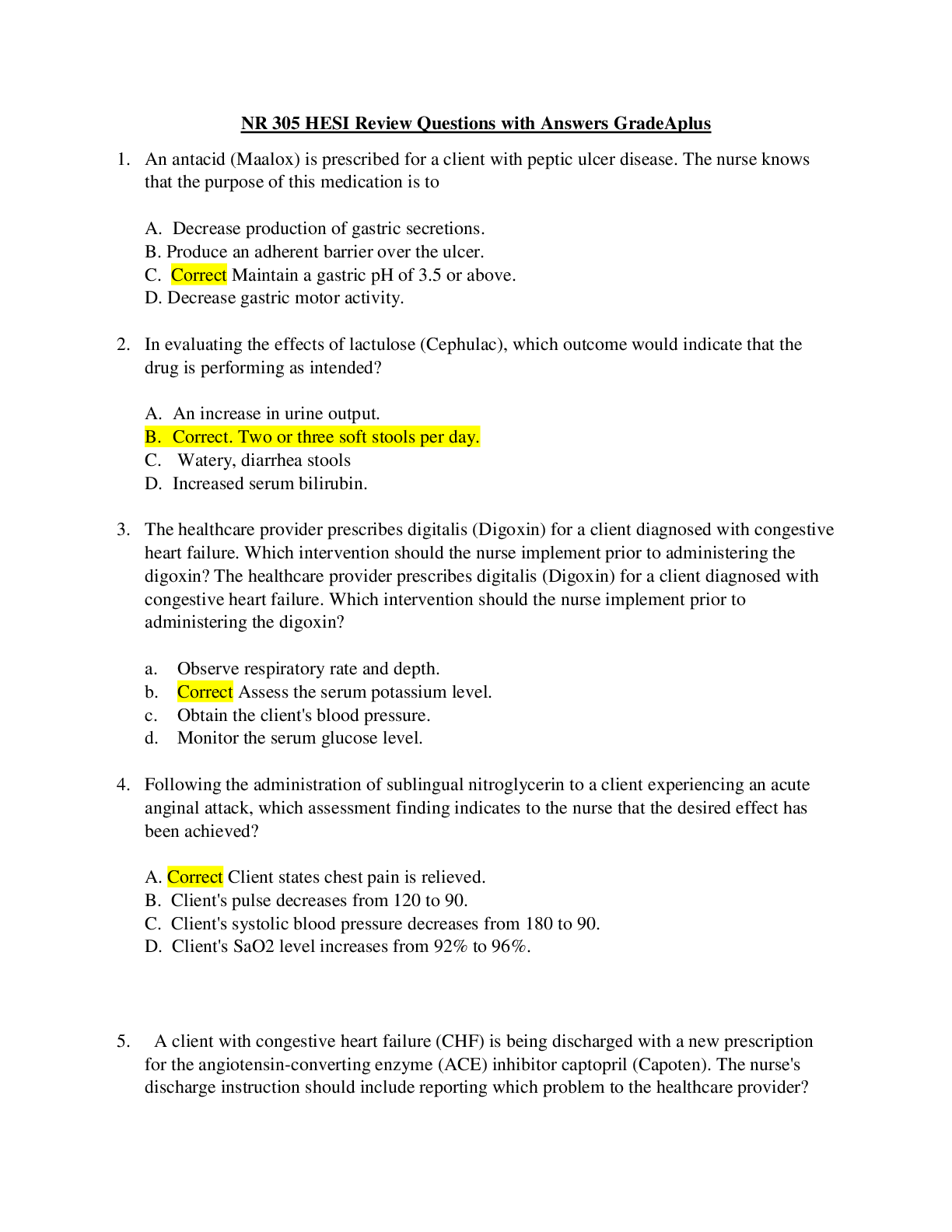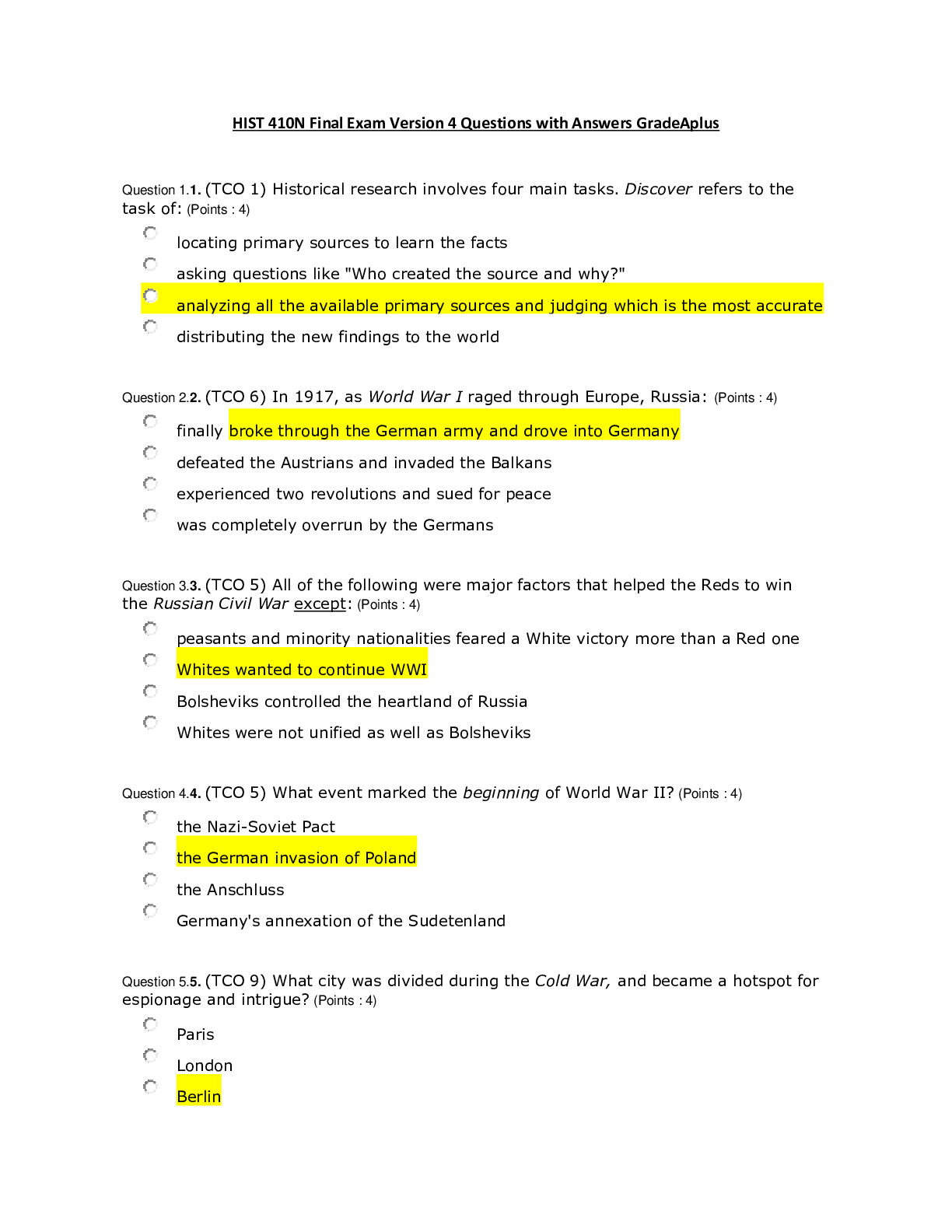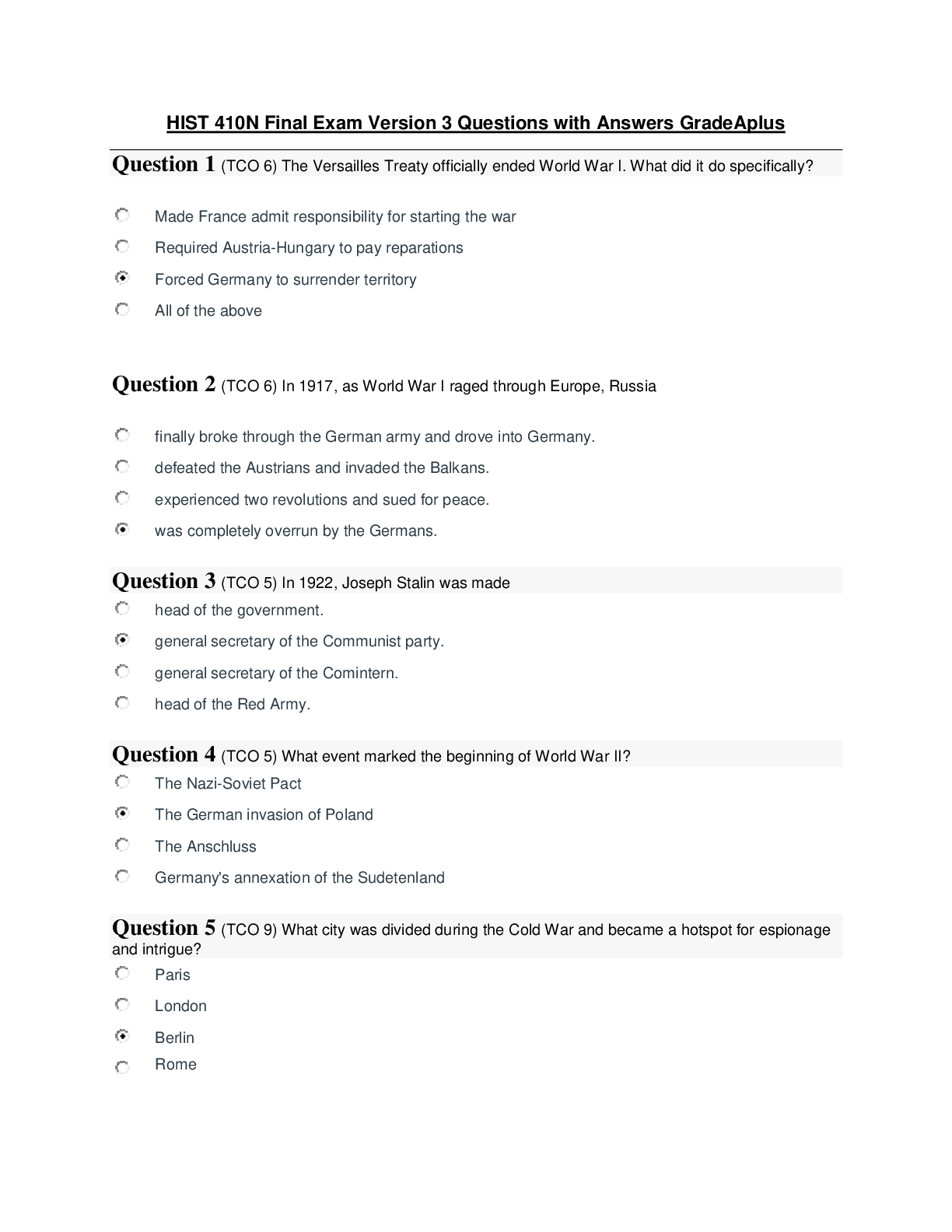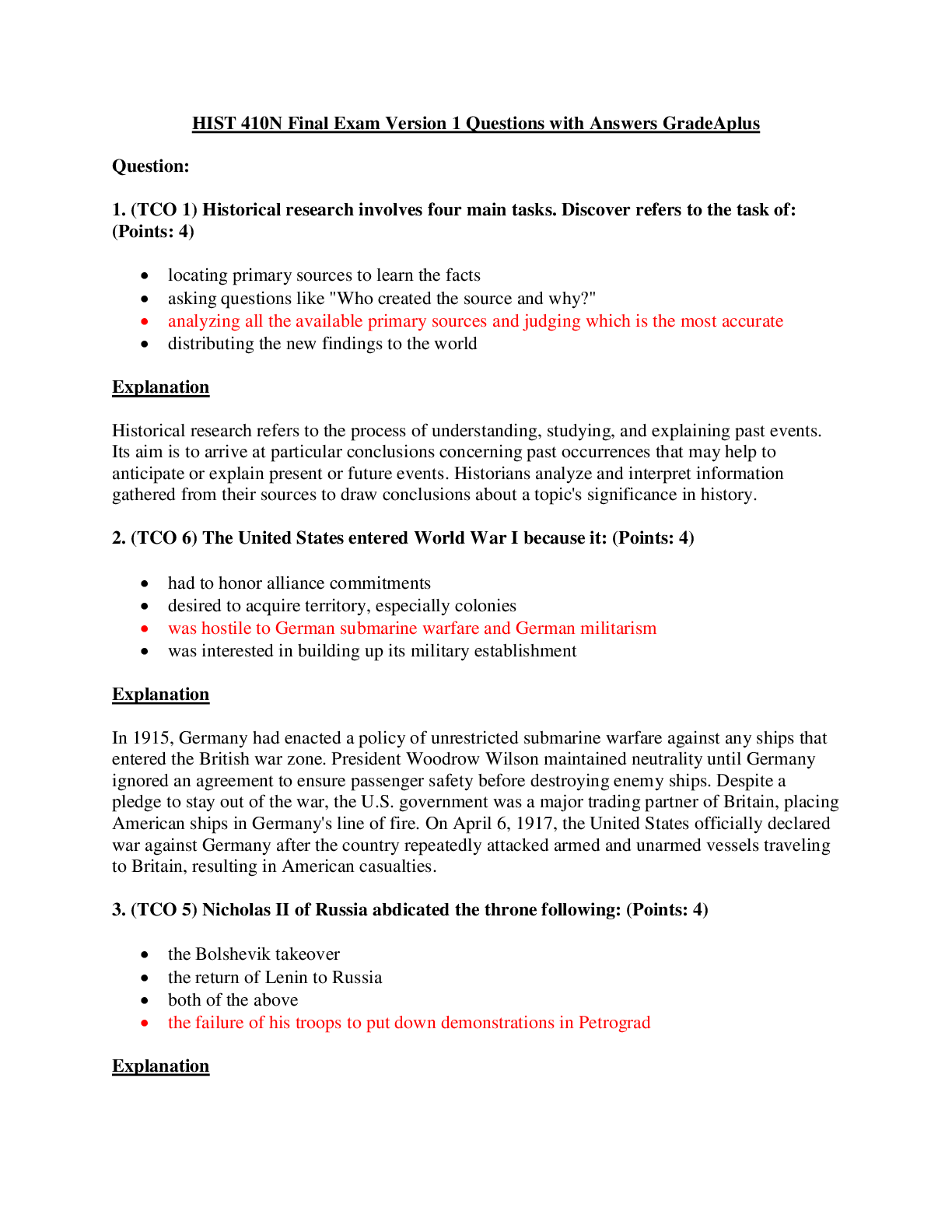*NURSING > EXAM > Basic Concepts of Pathophysiology & Implications for Nursing. Questions with Answers and Rationale (All)
Basic Concepts of Pathophysiology & Implications for Nursing. Questions with Answers and Rationale
Document Content and Description Below
Basic Concepts of Pathophysiology & Implications for Nursing. Questions with Answers and Rationale.Questions 1 & 2 below refer to the following situation: A 55-year-old man with emphysema (a type of ... chronic lung disease) who has smoked 2 packs of cigarettes per day for 40 years is hospitalized for acute onset of cough productive of bloody sputum (sputum=secretions from deep in the lungs). After a few days of testing and treatment, the patient’s nurse reads a physician’s note on the chart: “I have told the patient that the etiologies of his hemoptysis are: 1) exacerbation of his chronic emphysema and 2) the new diagnosis of lung cancer. The onsets of both were contributed to by his longstanding smoking.” 1. The patient asks the nurse for more information. Which of the following explanations to the patient best indicates a full understanding of the patient’s situation? a. “You have a disease process that was iatrogenically caused by cigarette smoking.” Incorrect: “iatrogenically” means caused by a medical person. b. “You have a sudden onset of a chronic lung disease that was brought on by lung cancer.” Incorrect: the chronic lung disease was part of the medical history of the patient; the term “chronic” means a long-standing disease, not a “sudden onset.” c. “The coughing up of blood is caused by a worsening of a disease you’ve had for a long time plus a new problem-- lung cancer.” d. “These diseases have been creeping up on you for probably 20 years; it just goes to show that you should never have taken up smoking.” Incorrect: no evidence in the scenario to support this sentence. (Besides, it sounds very judgmental.) 2. Based on all the information you have on the patient, which statement is most likely correct? a. The patient has a poor prognosis because of the comorbidities of lung cancer and cigarette smoking. Incorrect: Smoking is a risk factor not a disease that would fit the term “comorbidity.” b. Lung cancer was a sequela of the bloody sputum. Incorrect: the bloody sputum was part of the S&S of cancer; this answer implies the bloody sputum caused the cancer. c. A precipitating factor for the acute hospitalization was overexertion when the patient started an exercise class. Incorrect: no evidence in the scenario to support this sentence. d. Heavy cigarette smoking was a risk factor in the patient’s developing emphysema and lung cancer. ANSWERS & RATIONALES to ASSIGNMENT #1 (Basic Concepts of Pathophysiology & Implications for Nursing, Genetic Influence, Intracellular Functions) Academic honesty reminder: It is ok to discuss the assignments with other students as a learning tool, but it is considered a breach of academic honesty to copy answers directly from each other. Also, when taking a test, do not have this or any other informational document visible.2 Questions 3 & 4 refer to the following situation: An 80-year-old patient is in shock from loss of blood following an accident. His vital signs are: BP 80/50 (normal ~ 120/80), HR 120 (norm = 60-100), RR 20 (norm = 12 to 20), T 98.6 (norm ~ 98.6). 3. In assessing this patient, the nurse understands that the abnormal HR is a. probably the etiology for the patient’s low BP. Incorrect: the shock is due to the “loss of blood.” A state of shock has a “big picture” of low BP, high HR, cool hands, weakness, feeling faint, and/or passing out. In this context the high HR doesn’t CAUSE the low BP. b. due to the patient’s heart compensating for low blood volume by pumping faster. c. the normal compensatory response of shunting blood volume to the periphery. Incorrect: shunting blood to the periphery IS a compensatory response, but it is a “co-response” with high HR; one doesn’t cause the other. d. due to multiple risk factors. Incorrect: no evidence in the scenario to support this sentence. (TIP: when you are deciding on answers, plug them each into the stem of the question & ask yourself if it makes sense. Ex—does this sentence make sense? “In assessing this patient, the nurse understands that the abnormal HR is due to multiple risk factors.” Hopefully you see that no, it doesn’t make sense.) 4. The patient would also most likely have all of the following EXCEPT a. S&S of cool feet and hands from the body’s compensatory response to shock. b. S&S of feeling faint and weak from blood loss. c. a risk factor of shock. In an except question, remind yourself that 3 things go together. The 4th one is the one you choose—it doesn’t fit. d. a more guarded (ie, “poorer”) prognosis because of his age. [Show More]
Last updated: 1 year ago
Preview 1 out of 74 pages
Instant download

Buy this document to get the full access instantly
Instant Download Access after purchase
Add to cartInstant download
Reviews( 0 )
Document information
Connected school, study & course
About the document
Uploaded On
Nov 30, 2020
Number of pages
74
Written in
Additional information
This document has been written for:
Uploaded
Nov 30, 2020
Downloads
0
Views
51


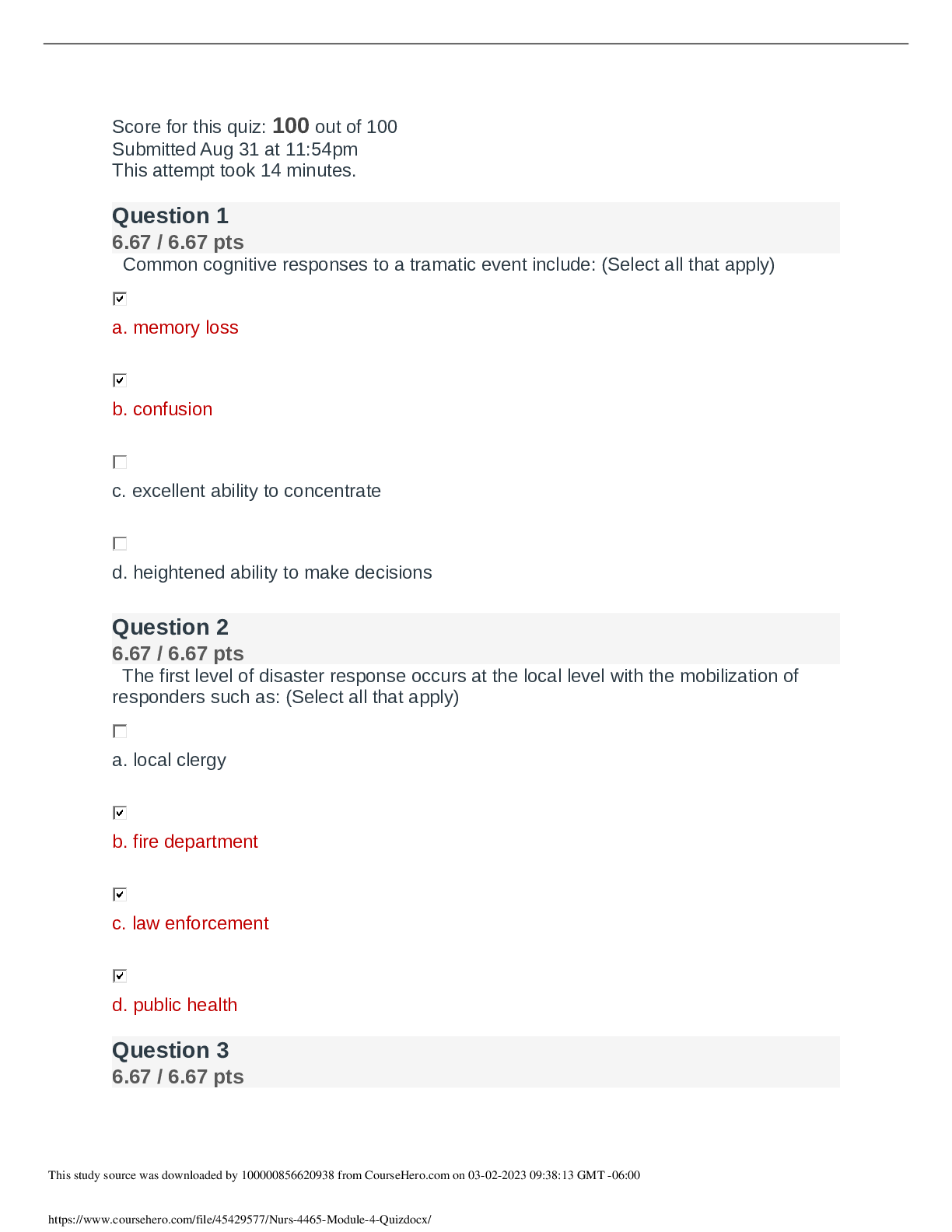
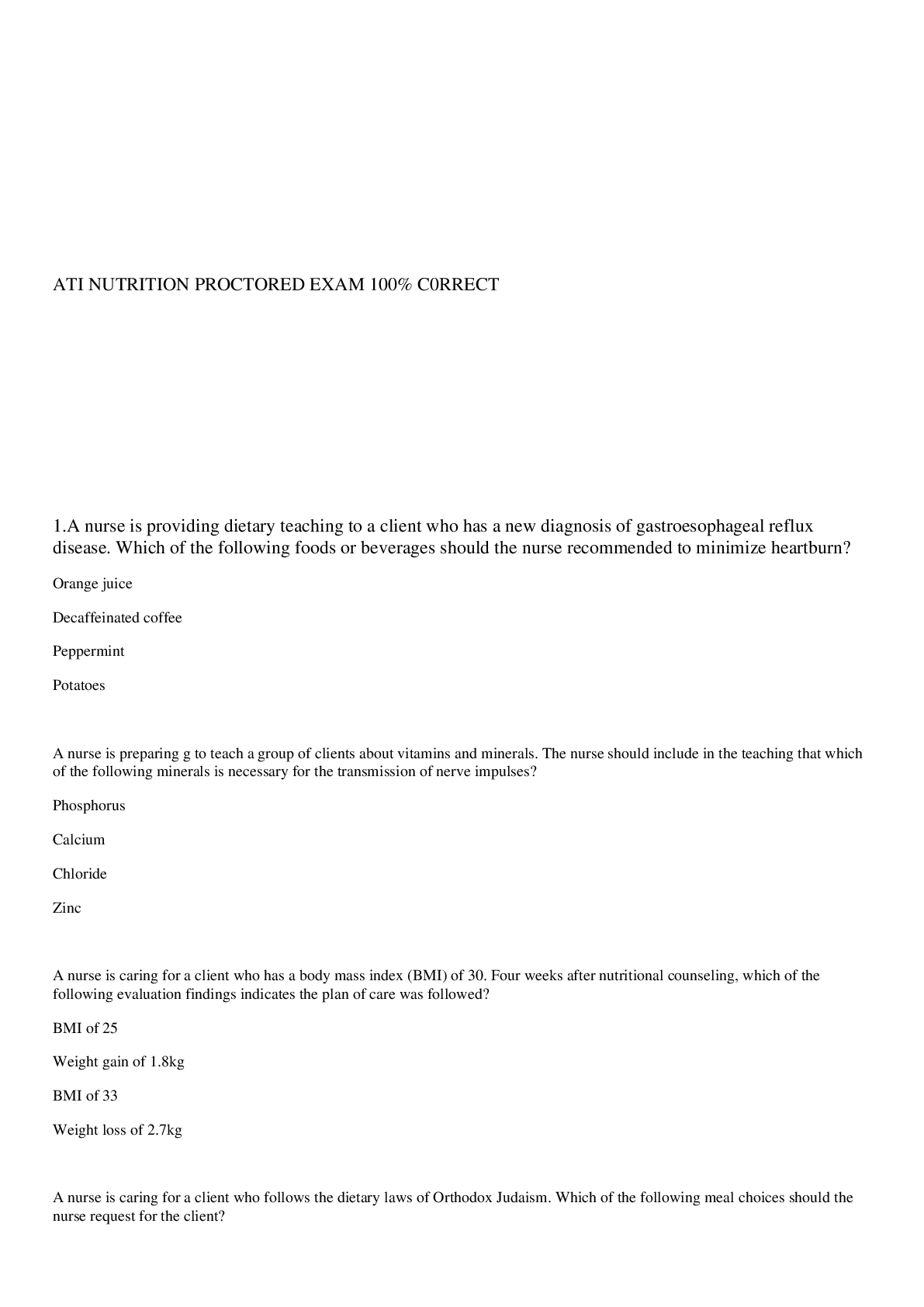
.png)
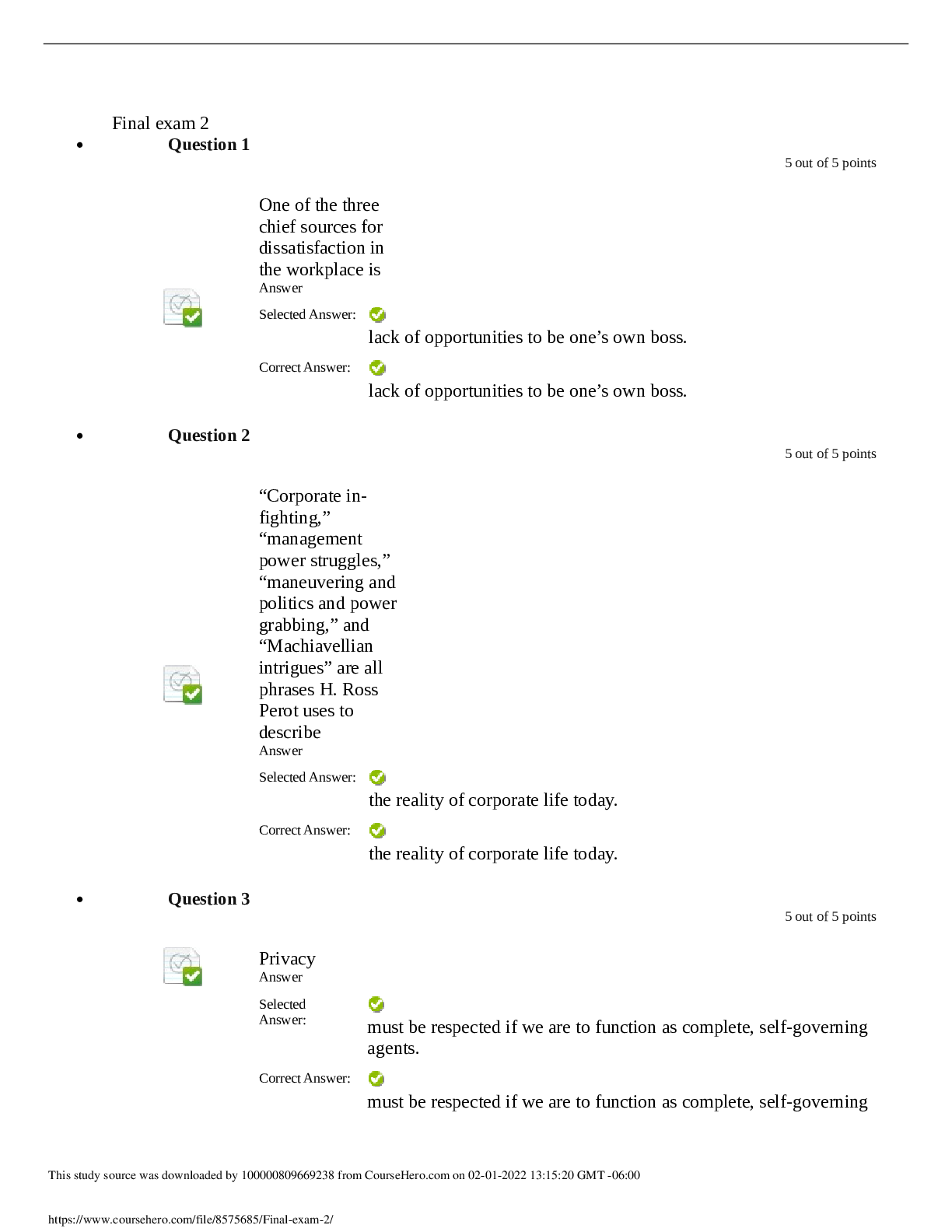
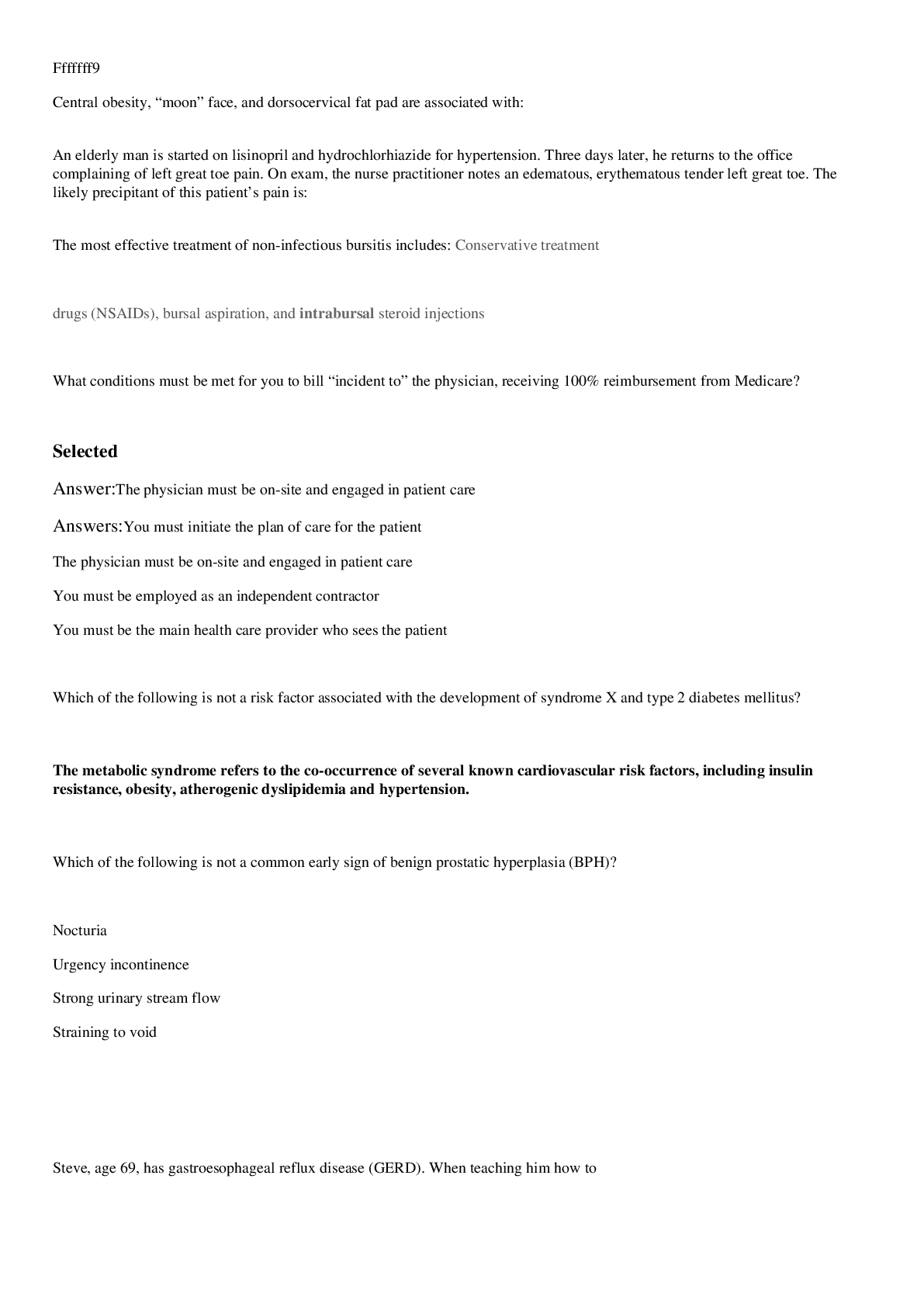

.png)
